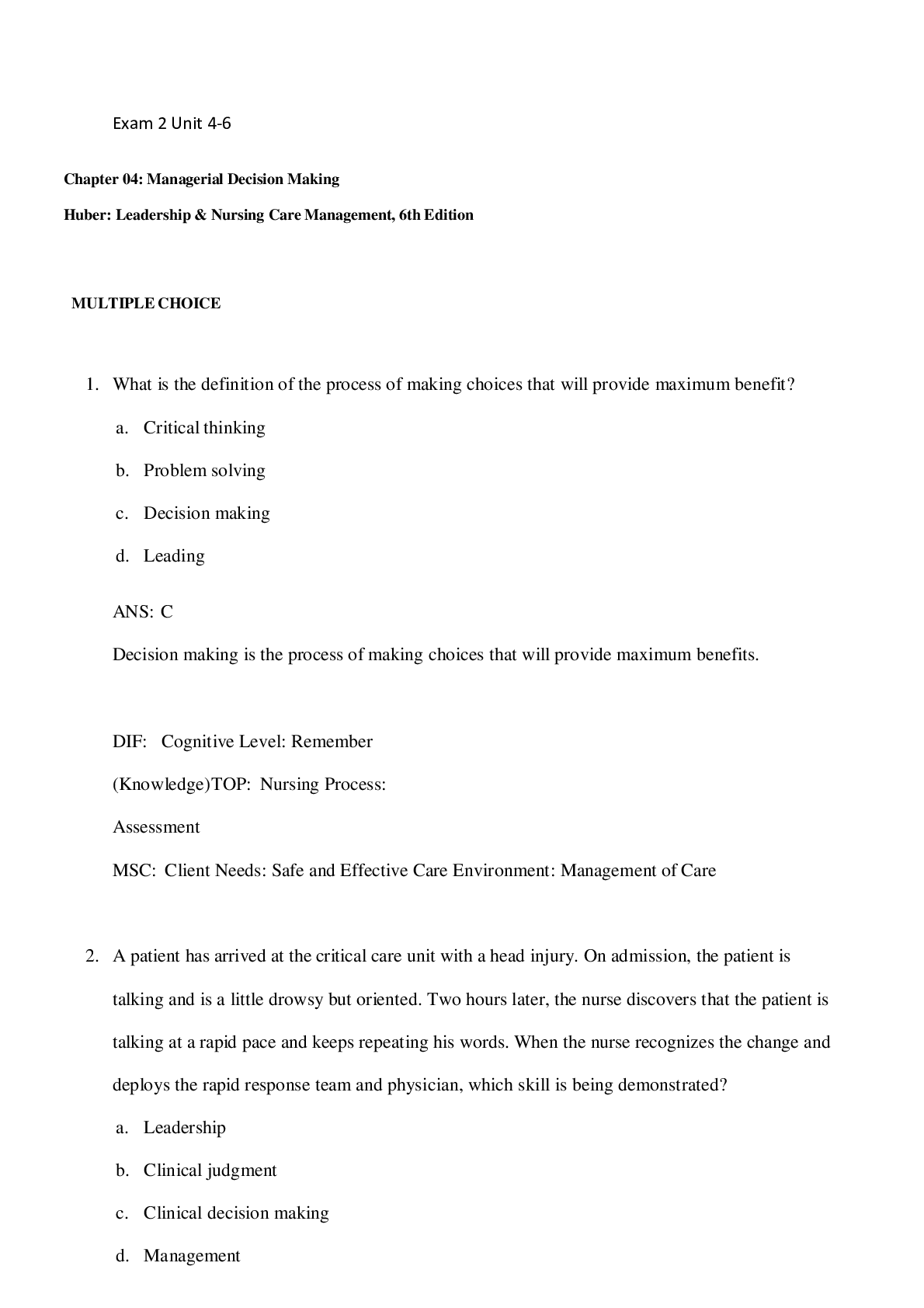*NURSING > QUESTIONS & ANSWERS > Managerial Decision Making Huber: Leadership & Nursing Care Management, 6th Edition (All)
Managerial Decision Making Huber: Leadership & Nursing Care Management, 6th Edition
Document Content and Description Below
1. What is the definition of the process of making choices that will provide maximum benefit? a. Critical thinking b. Problem solving c. Decision making d. Leading ANS: C Decision making is the ... process of making choices that will provide maximum benefits. DIF: Cognitive Level: Remember (Knowledge) TOP: Nursing Process: Assessment MSC: Client Needs: Safe and Effective Care Environment: Management of Care 2. A patient has arrived at the critical care unit with a head injury. On admission, the patient is talking and is a little drowsy but oriented. Two hours later, the nurse discovers that the patient is talking at a rapid pace and keeps repeating his words. When the nurse recognizes the change and deploys the rapid response team and physician, which skill is being demonstrated? a. Leadership b. Clinical judgment c. Clinical decision making d. Management ANS: B The competent nurse uses the information about head injury, change in mental status from talking and drowsy but oriented to talking at a rapid pace, and the potential for the patient to deteriorate to discern that the patient is experiencing cerebral edema or increased intracranial pressure. The nurse is demonstrating clinical judgment, which is the interpretation of the information of patient problems and needs. DIF: Cognitive Level: Analyze (Analysis) TOP: Nursing Process: Assessment MSC: Client Needs: Safe and Effective Care Environment: Management of Care 3. Which of these concepts is key to refining clinical judgment capabilities? a. Critical judgment b. Reflection c. Management experience d. Nursing expertise ANS: B Reflection is key to refining the capabilities of clinical judgment. As a nurse gets more experience, the intuitive component of judgment follows. Nurses do not require management experience or nursing expertise to refine clinical judgment. DIF: Cognitive Level: Remember (Knowledge) TOP: Nursing Process: Assessment MSC: Client Needs: Safe and Effective Care Environment: Management of Care 4. A staff RN is leading a quality improvement team on the care of the total hip replacement patient. The issue is an increased length of stay from 1 year ago. The nurse asks team members to reframe the problem statement from their perspective. Twenty different problem statements were developed. The team is focusing on four of the problem statements. This is an example of which of the following techniques? a. Decision making b. Evaluating the consequences c. Inclusive judgment d. Problem processing ANS: A Decisions are made following the basic problem-solving process but also involve an evaluation of the effectiveness of outcomes that result from the decision-making process itself. DIF: Cognitive Level: Apply (Application) TOP: Nursing Process: Planning MSC: Client Needs: Safe and Effective Care Environment: Management of Care 5. How is decision making at the staff nurse level exemplified? a. The staff nurse adapts to a challenging patient assignment. b. The staff nurse refers issues to the performance improvement committee. c. The staff nurse accepts the status quo. d. The staff nurse questions current practice and refers to unit leadership for change. ANS: A Decision making is the process of making choices from several courses of action in order to solve problems. The process of selecting one course of action from alternatives forms the basic core of the definition of decision making. The staff nurse who adapts to a challenging patient assignment is using decision making to affect the quality of patient care delivered. DIF: Cognitive Level: Apply (Application) TOP: Nursing Process: Assessment MSC: Client Needs: Safe and Effective Care Environment: Management of Care 6. What is the final step in the clinical reasoning process? a. The right cues b. The right patient c. The right reason d. The right time ANS: C There are five steps for clinical reasoning, which involves five rights: the right cues or clinical data, the right patient or setting priorities, the right time or capability of identifying high risk patients, the right action or clinical decision that results from the clinical reasoning process, and the right reason. The right reason incorporates legal and ethical considerations. DIF: Cognitive Level: Remember (Knowledge) TOP: Nursing Process: Assessment MSC: Client Needs: Safe and Effective Care Environment: Management of Care 7. A nurse manager has ordered equipment for a new unit. The company has sent two notices that the equipment is on back order. The nurse manager is debating whether to wait for the equipment on back order or to cancel the order and go with another company. She discusses this issue with another nurse manager and they determine that the equipment is urgent for patient safety in the new unit. The manager orders the necessary equipment from another company even though it is slightly more expensive. This is an example of: a. clinical decision making b. prioritization c. triage decision d. clinical reasoning ANS: B Prioritization occurs not only in triage situations, but also across the care spectrum. Thus decisions have to be made regarding what care has to be delivered and when the care is to be delivered. All nurse managers and leaders need to consider the implications of their decisions. Each decision made involves financial, ethical, and human resources. Furthermore, reimbursement and other regulations must be taken into account. DIF: Cognitive Level: Apply (Application) TOP: Nursing Process: Assessment MSC: Client Needs: Safe and Effective Care Environment: Management of Care 8. The nurse in a medical-surgical unit is working short-staffed due to a sick call. Which of these is an example of prioritization? a. Charting by exception b. Omitting personal hygiene in favor of timely medication administration c. Timely medication administration without scanning the patient armband d. Deploying a rapid response team when a patient condition changes ANS: B Prioritization occurs not only in triage situations, but also across the care spectrum. Thus decisions have to be made regarding what care has to be delivered and when the care is to be delivered. For example, nurses implicitly make decisions to ration care when time and staffing are short (Jones, 2015). On a day-to-day basis nurses must decide if such things as routine hygiene activities are omitted in favor of administering critical treatments, including medications DIF: Cognitive Level: Analyze (Analysis) TOP: Nursing Process: Assessment MSC: Client Needs: Safe and Effective Care Environment: Management of Care 9. A family member of a patient files a complaint that her mother’s dentures were lost when the patient was transferred from one unit to another. The risk management department interviews the patient and the staff nurses who cared for the patient. Which of the following problem-solving techniques was used? a. Delegation b. Direct intervention c. Indirect intervention d. Purposeful inaction ANS: B The focus of leadership and management decision making is more closely related to the nurse’s role as care coordinator and systems problem solver. Some decisions, such as those requiring disciplinary action, do require the manager’s direct intervention. DIF: Cognitive Level: Apply (Application) TOP: Nursing Process: Assessment MSC: Client Needs: Physiological Integrity: Basic Care and Comfort 10. Which of the following scenarios is an example of clinical reasoning? a. A nurse ignores a client’s requests to stop his dialysis. b. A nurse is scheduled to work over the weekend, and she has a family outing to attend. c. A nurse is counseling a woman with breast cancer about terminating her pregnancy and receiving chemotherapy or completing the pregnancy and possibly not surviving. d. A nurse has been offered an exciting new position with a dramatic increase in salary, but she would have to move out of state, away from her ailing parents. ANS: C Clinical reasoning is the process of analyzing and synthesizing both objective and subjective cues about patients. Levett-Jones and colleagues (2010) defined five steps for clinical reasoning. They stated that clinical reasoning involved five rights: the right cues or clinical data, the right patient or setting priorities, the right time or capability of identifying high risk patients, the right action or clinical decision that results from the clinical reasoning process, and the right reason. The right reason incorporates legal and ethical considerations. For example, the clinical process may lead a nurse to recommend that a patient needs respiratory support in the form of a ventilator. However, the patient may have an advance directive that would cause the clinician to make a different decision. DIF: Cognitive Level: Analyze (Analysis) TOP: Nursing Process: Assessment MSC: Client Needs: Safe and Effective Care Environment: Management of Care [Show More]
Last updated: 2 years ago
Preview 1 out of 101 pages

Buy this document to get the full access instantly
Instant Download Access after purchase
Buy NowInstant download
We Accept:

Reviews( 0 )
$7.00
Can't find what you want? Try our AI powered Search
Document information
Connected school, study & course
About the document
Uploaded On
Apr 24, 2022
Number of pages
101
Written in
Additional information
This document has been written for:
Uploaded
Apr 24, 2022
Downloads
0
Views
68


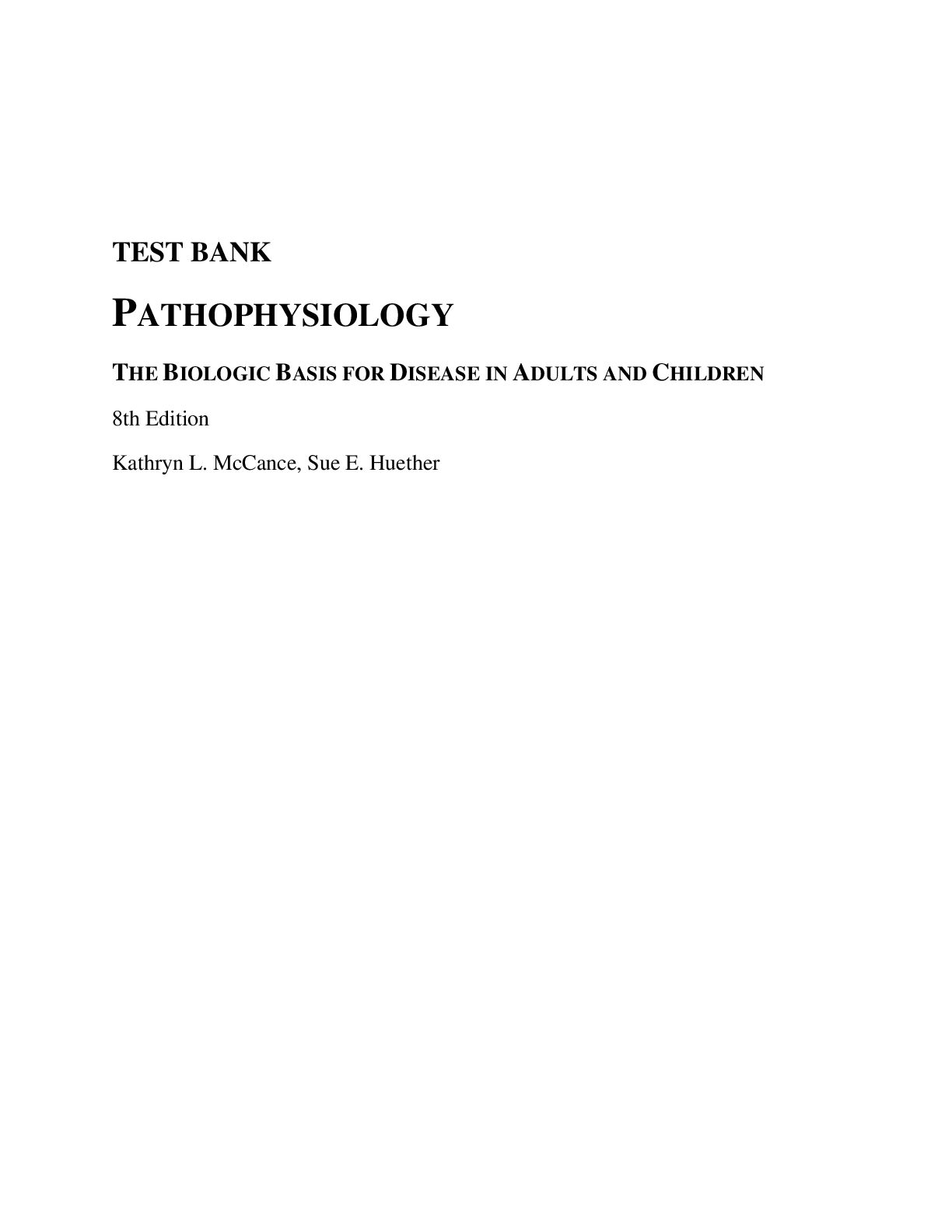


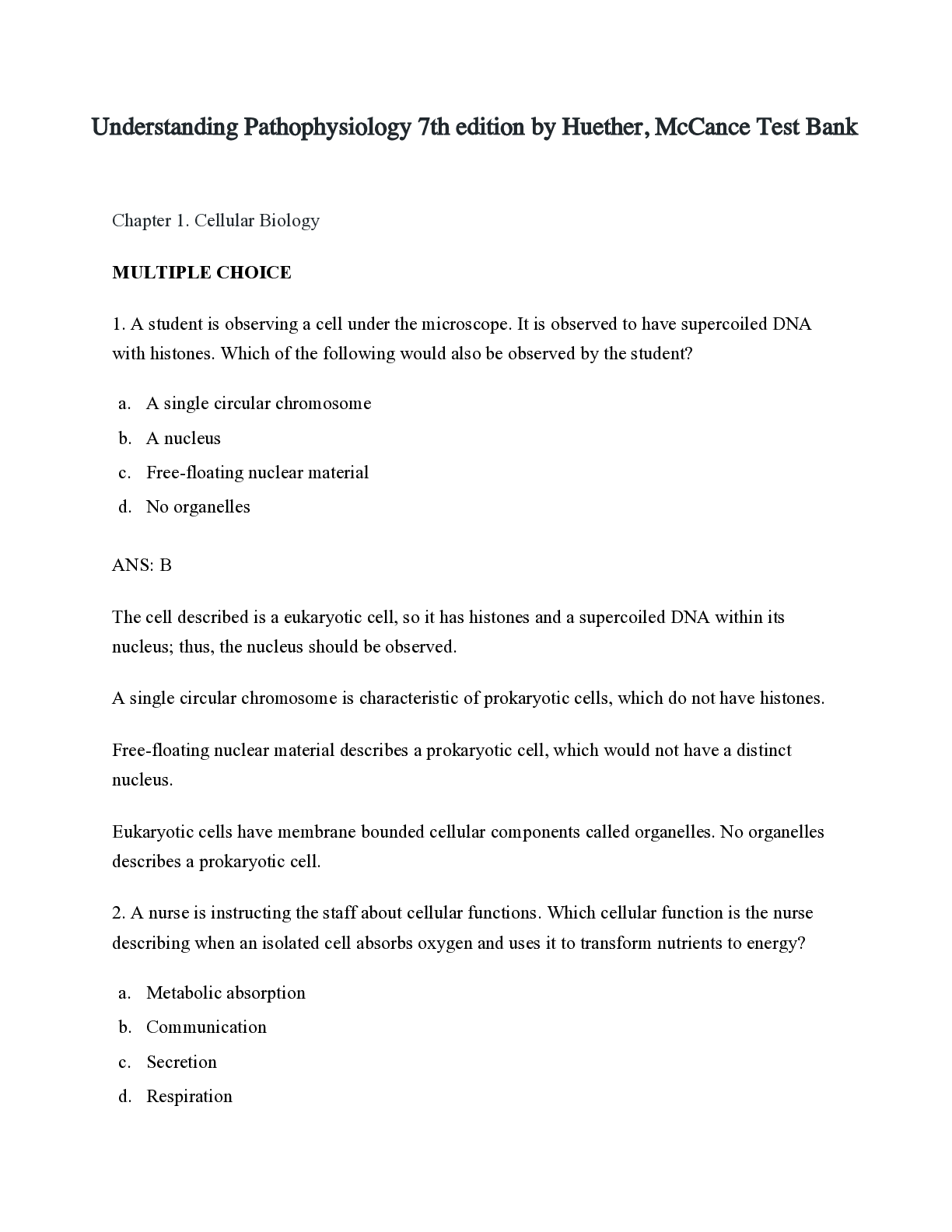
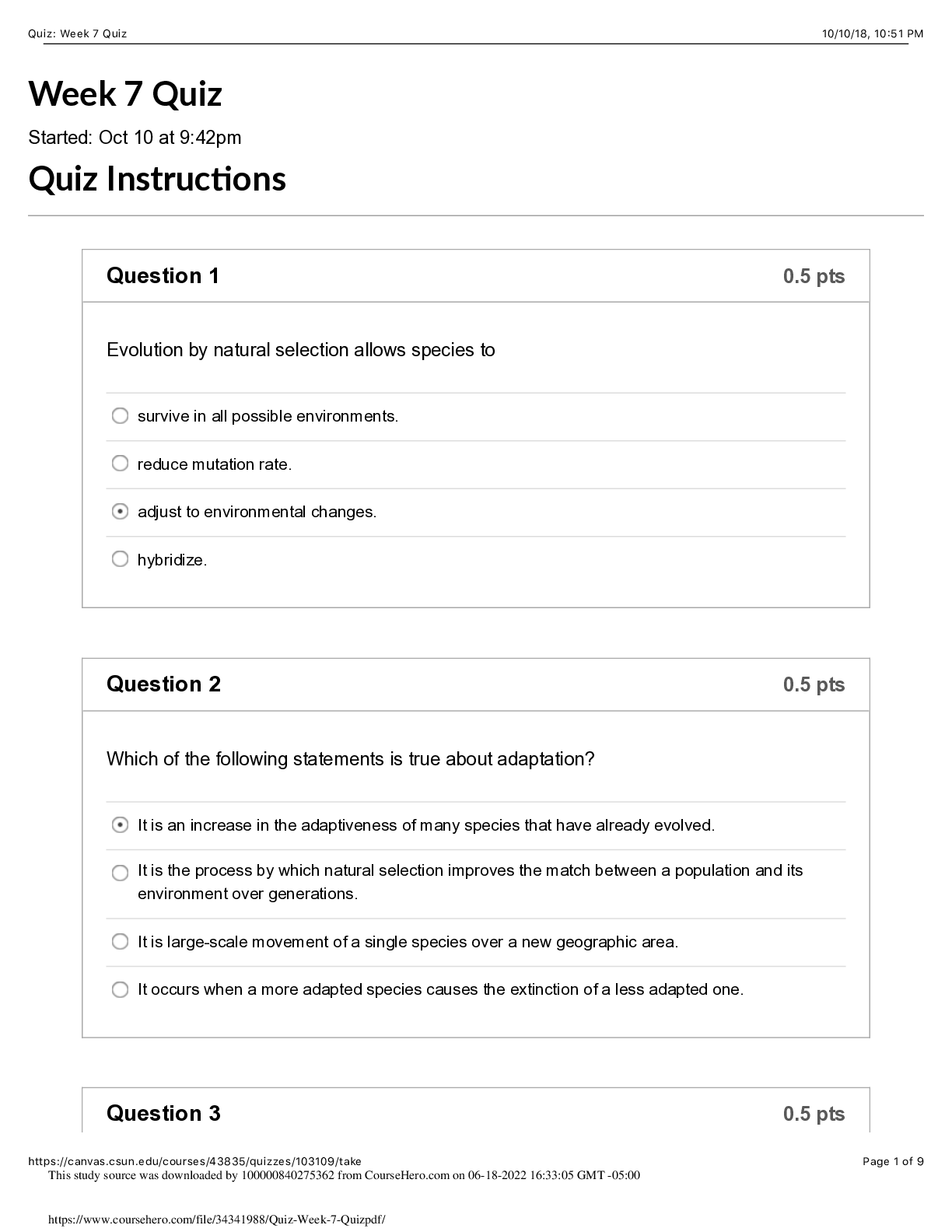
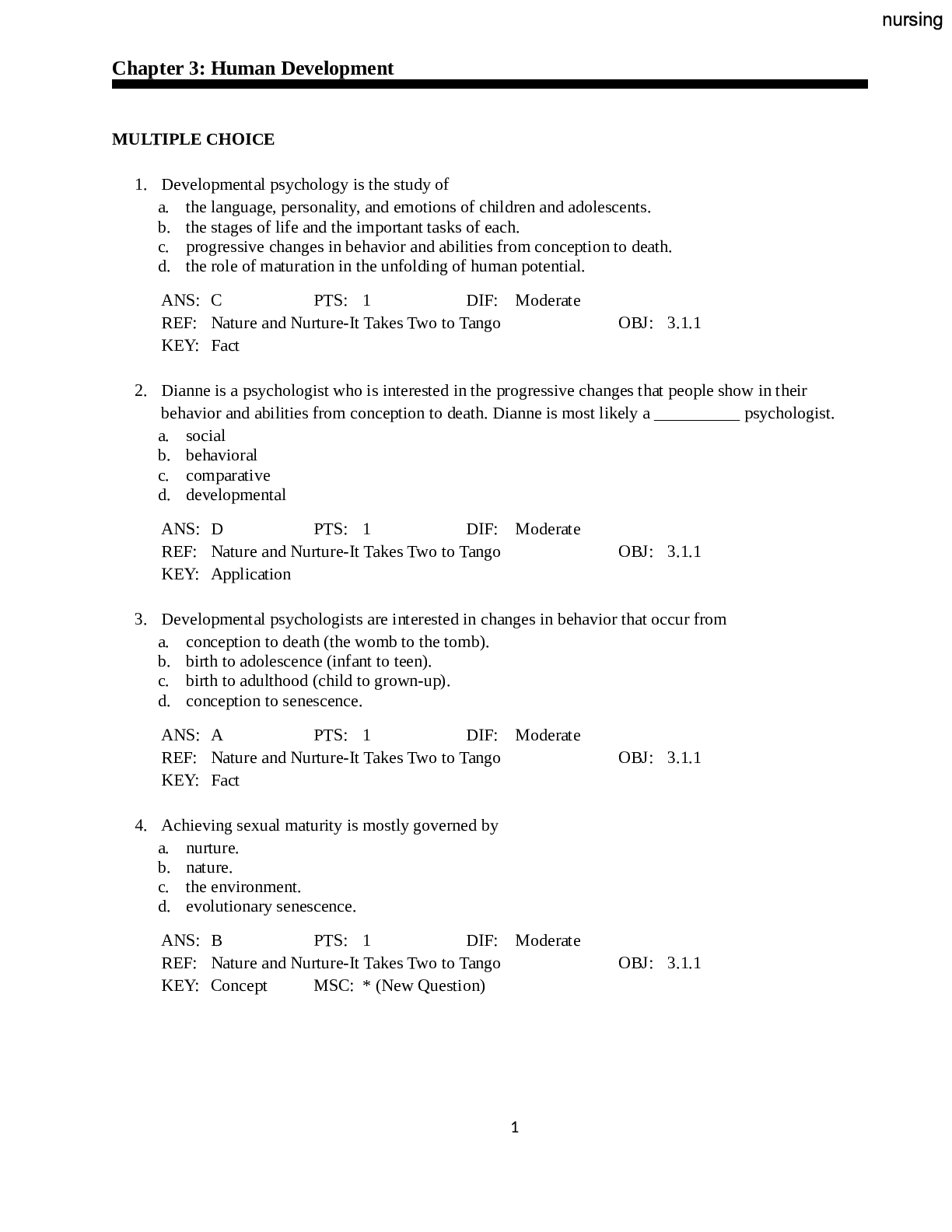

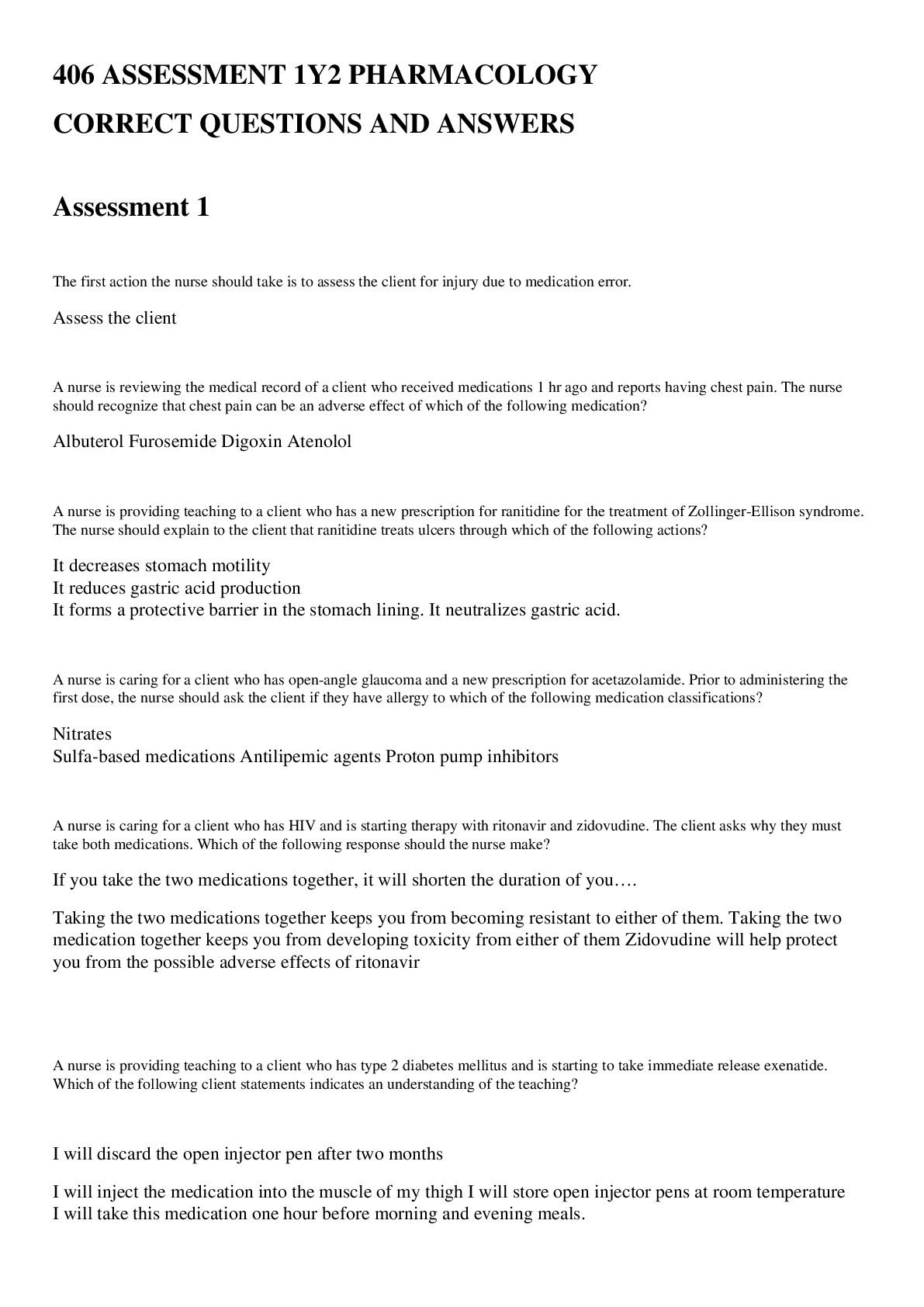
.png)


